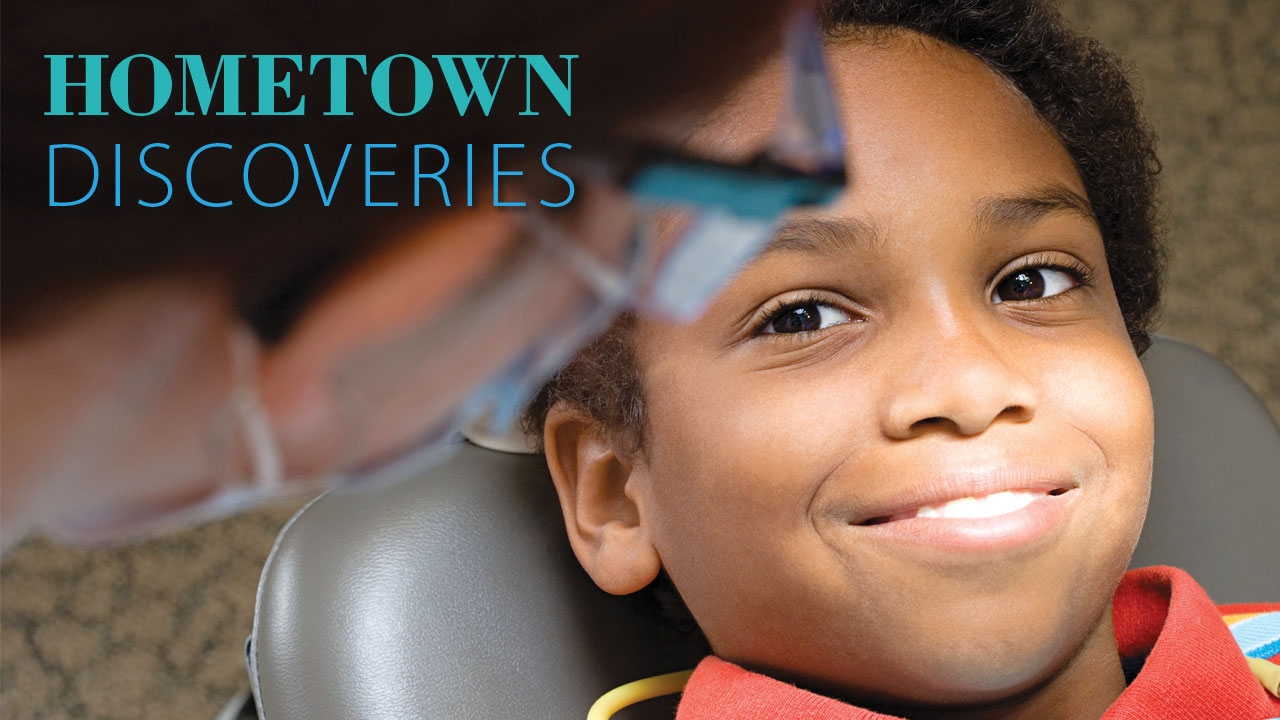Mary Wallace, D.M.D., and Gerald Anderson, D.M.D., are community dentists, she in Rainbow City, Alabama, and he in Selma. But in the past few years, they have taken on a new role: clinical researcher.
Both are among more than 5,600 dentists and hygienists in the National Dental Practice-Based Research Network (PBRN), which has its national administrative hub at the UAB School of Dentistry. Chances are, its studies have helped your dental practitioner provide more effective care and produce better results for you and your family. That’s because the network is dedicated to creating a new and growing body of evidence—accumulated from practitioners themselves—about what works best in oral care.

Practical Impact
Gregg Gilbert, D.D.S., M.B.A., the network’s principal investigator and chair of the UAB Department of Clinical and Community Sciences, says the benefits of a research network created by and for dental practitioners were clear from the start. “Research has traditionally been done in academic health centers, not in community practice,” he explains. “But often those research results are promptly ignored by the practicing community—either because they’re not aware of the studies, or often they don’t think the topics have a very practical impact for them. With the PBRN model, we’ve realized it makes sense to engage the practitioners from the outset.” The National Dental PBRN launched in 2012 with a seven-year, $66.8-million grant from the National Institute of Dental and Craniofacial Research.
Anderson, who has been involved in the network from the outset, says centering research on what happens in the dental chair is appealing. “The focus is on practical research projects that can easily and quickly translate into everyday private practice,” he says. As a participating dentist, he can suggest new research topics for the network as well as participate in studies. He also can recruit patients for more in-depth clinical investigations. (Nearly 7,000 patients nationwide participated in 2015.)

The National Dental PBRN conducts research in a variety of formats from informal surveys to full, carefully monitored clinical studies. Topics cover all aspects of dentistry, including routine, low-cost care as well as procedures that are rare, costly, and designed for tough-to-diagnose conditions, Gilbert explains. (The infographics offer a glimpse of some of the findings.)
Acting on Results
Some of the results have been surprising—and have made an immediate impact on patient care. Gilbert recalls a study that simply measured patient satisfaction with a common dental filling procedure. “The patients in general were very satisfied with their dentists, with 90 percent saying they were satisfied or very satisfied with the care they received,” he explains. “But with the 10 percent who were not satisfied, the dentist didn’t have a clue.” This finding changed how dentists communicate with patients, “prompting them to ask themselves if they should get assessments from patients on a more routine basis,” Gilbert notes.
Anderson points to another result that made him see a common procedure in a new light. It came from one of the earliest studies, when the network included a hub in Scandinavia in addition to its stateside participants. The research considered when it’s most appropriate to intervene with a cavity, ranging from the time dentists see discoloration on the enamel through the development of a hole in the tooth, he explains. “The Europeans were much more conservative and tended to try fluoride gels and varnishes,” Anderson continues, “while American dentists typically did a filling early on. It made me look at different noninvasive treatments and consider ways that I could be a little more conservative in my treatment of dental decay.”
In addition to conducting studies, disseminating results to participants, and publishing papers in prominent scientific journals, the network holds annual meetings to bring members together to discuss recent findings. Wallace says she and her colleagues benefit from the opportunity to compare notes and brainstorm. “We have breakout sessions to discuss ideas for future studies, and as a result, the network always has new input from the practitioners,” she says. That ensures that the research “is all about what really works, and what is pertinent to the everyday dentist. That’s what we need.”
She’s not the only one who sees the practical benefits of the research. Wallace adds that her patients love participating in the studies, too. “They’re so excited about it,” she says. “They’re enthusiastic to help dentistry be at the top of where it needs to be.”

• Learn more about the National Dental Practice-Based Research Network and other School of Dentistry studies.


